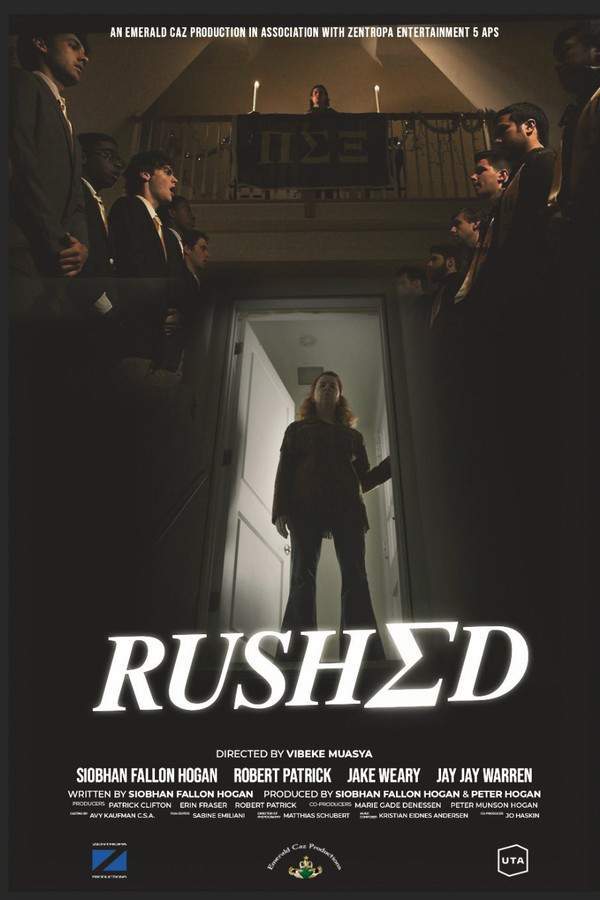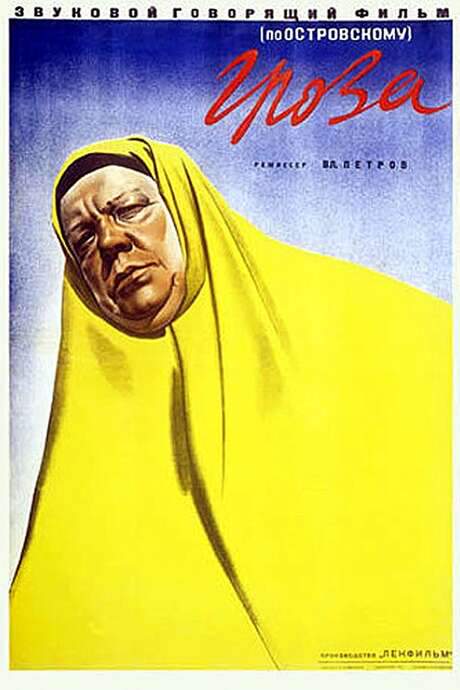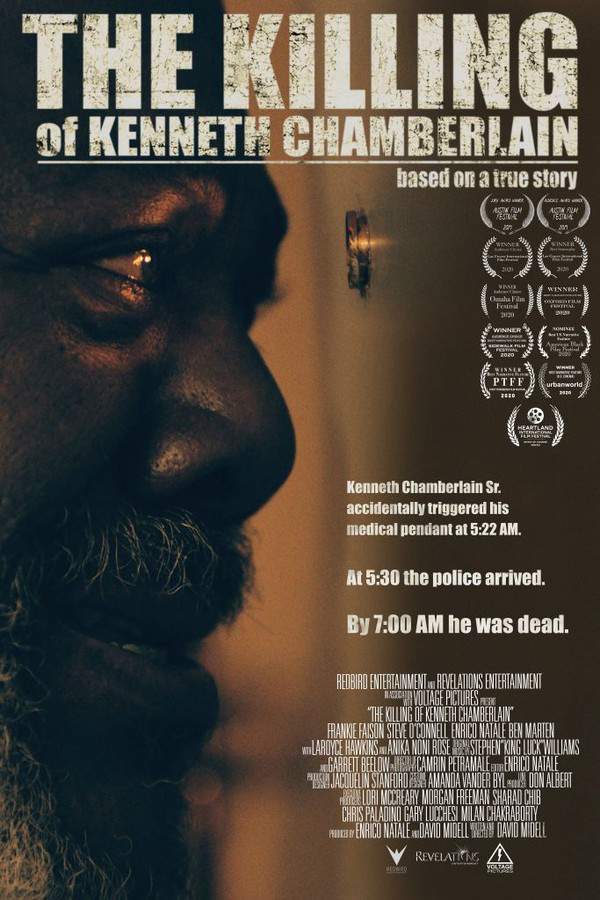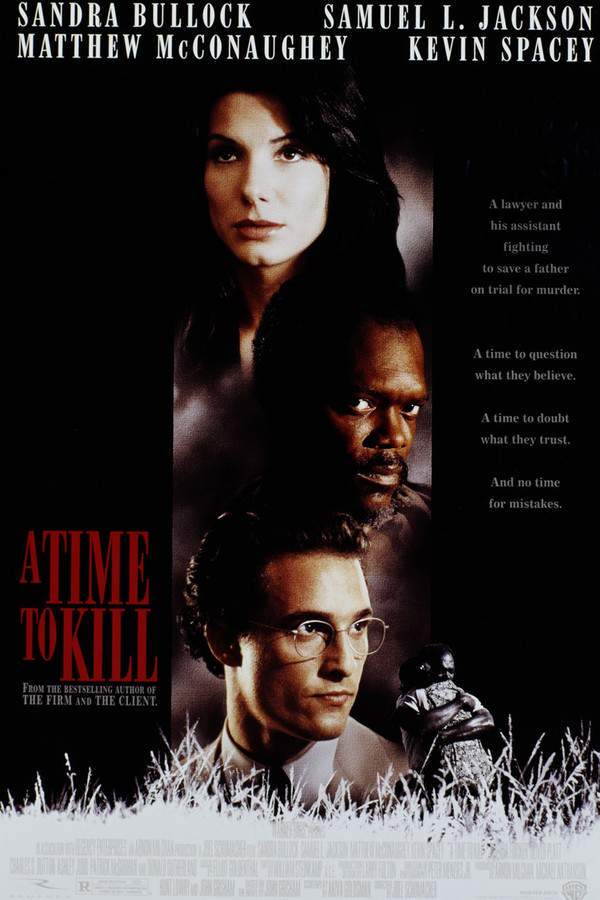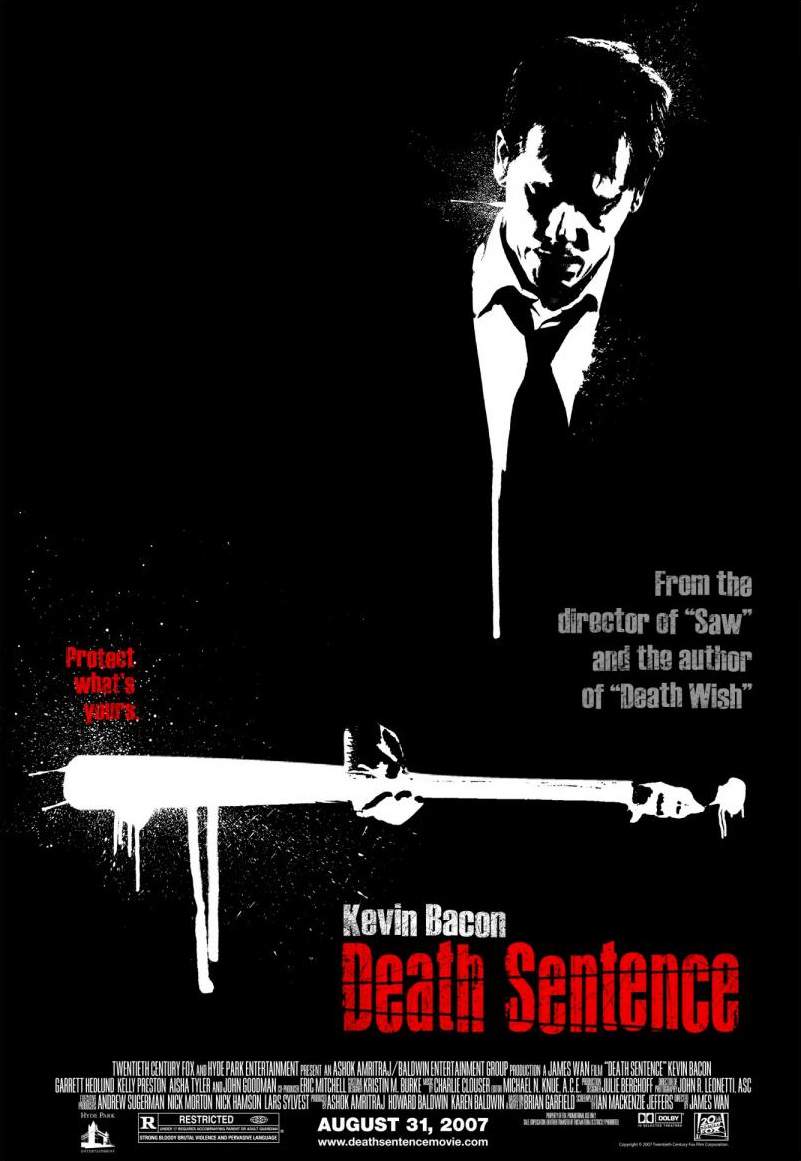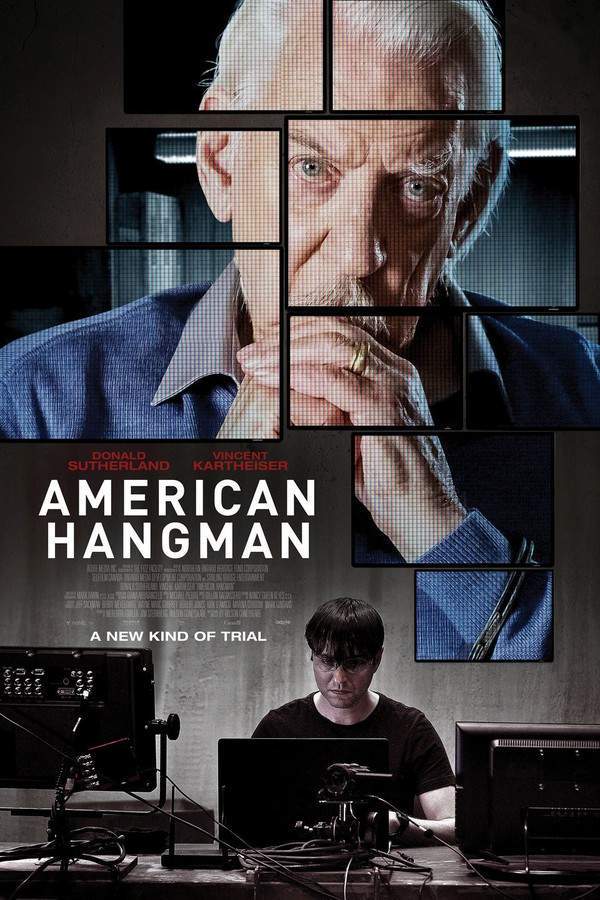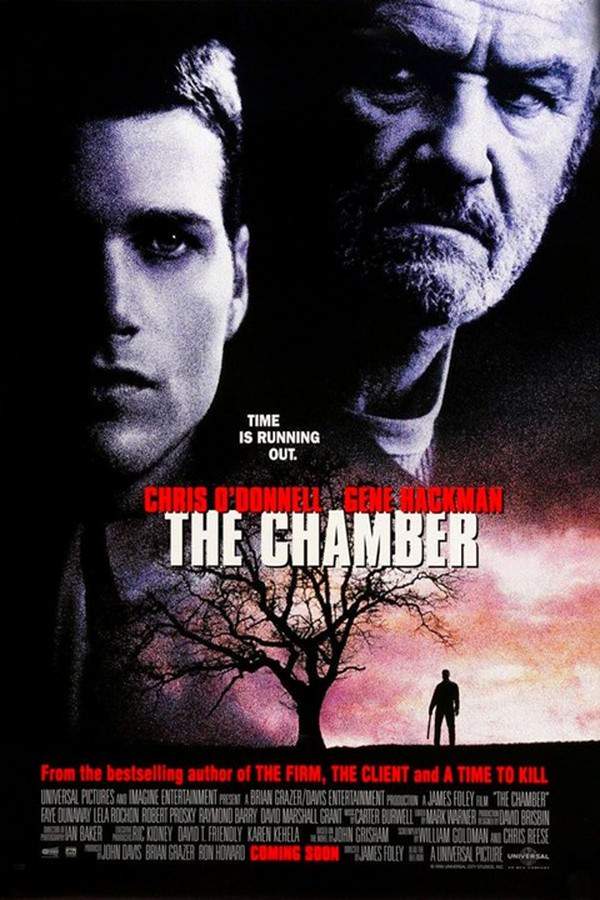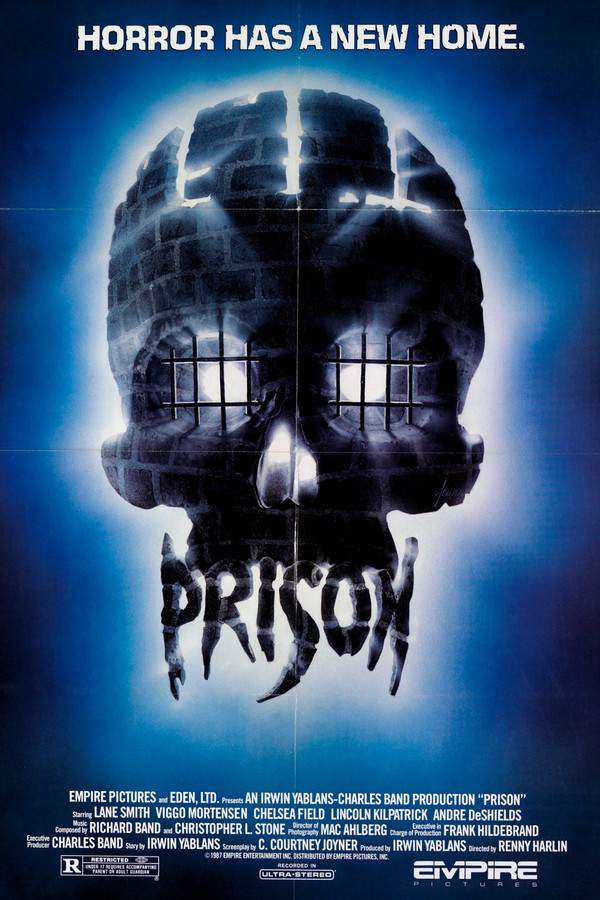
The Chamber
Year: 1996
Runtime: 113 min
Language: English
Director: James Foley
Idealistic lawyer Adam Hall takes on the death row case of his grandfather, a man he barely knew. As he investigates, he uncovers a complex web of family secrets and long-buried lies. With only 28 days until the scheduled execution, Adam races against time to uncover the truth and confront a dangerous past, ultimately seeking a path toward justice and his own redemption.
Warning: spoilers below!
Haven’t seen The Chamber yet? This summary contains major spoilers. Bookmark the page, watch the movie, and come back for the full breakdown. If you're ready, scroll on and relive the story!
The Chamber (1996) – Full Plot Summary & Ending Explained
Read the complete plot breakdown of The Chamber (1996), including all key story events, major twists, and the ending explained in detail. Discover what really happened—and what it all means.
In April 1967, the office of Marvin Kramer, a Jewish civil rights lawyer in Indianola, Mississippi, is bombed by the Ku Klux Klan. The attack kills Kramer’s five-year-old twin sons and leaves him gravely injured, ultimately leading to the amputation of his legs and his later suicide. The Klansman responsible, Sam Cayhall, is tried for murder in the bombing and is eventually convicted and sentenced to die in the gas chamber at the Mississippi State Penitentiary. Twenty-nine years pass before a new chapter begins.
Adam Hall, a young attorney at the Chicago firm Kravitz and Bane, is assigned to take on Cayhall’s case as a pro bono matter in the weeks leading up to Cayhall’s scheduled execution. He is Cayhall’s grandson, part of a family that has moved away from the South and changed their name to escape the weight of the past. Adam is driven by a desire to understand the dark legacy that shaped his father’s life and his own, including the circumstances surrounding his father’s suicide, which Adam recalls from his childhood when he found his body. As Adam travels to the South for the case, he reencounters his aunt, Lee Bowen, a glamorous but alcoholic socialite who has managed to keep her tie to the family quiet. She cautions him about digging too deep into a past that might ruin what remains of their lives.
On death row, [Sam Cayhall] is a blunt, bitter, and unapologetic racist who repeatedly boasts about his role in the Klan bombing campaign, though he denies that the incidents were meant to kill. He agrees to let Adam represent him, but he forbids any clemency requests to Governor McAllister, who had prosecuted him in a prior retrial and built his political career on that case. Yet the Governor’s aide, Nora Stark, approaches Adam with a contrary possibility: clemency could be possible if Cayhall would reveal information about unidentified co-conspirators. This twist nudges Adam into a broader investigation of the bombing’s origins and its possible connections to a wider network.
As Adam digs, inconsistencies surface. The facts of the original case appear muddier than Cayhall would admit, suggesting he may not have acted alone or with sole responsibility for the bomb. Stark and a former FBI agent hint at a broader conspiracy involving the Mississippi State Sovereignty Commission and White Citizens’ Councils, organizations active at the time in opposing civil rights progress. Cayhall himself resists accessing the Sovereignty Commission’s sealed files, fearing exposure of former allies in the Klan and fearing the Governor’s true motive—political leverage rather than justice.
Meanwhile, Adam presses forward with legal maneuvers—motions for stays of execution and arguments that Cayhall may be legally insane due to indoctrination into the Ku Klux Klan, arguing that his client’s ability to distinguish right from wrong could be compromised. In parallel, Lee confronts her own past. She reveals that in the early 1950s, as children, she and Adam’s father witnessed Eddie, their brother, murder their Black neighbor Joe Lincoln after a dispute over a toy soldier. Eddie’s guilt, and Lee’s failure to intervene, contribute to his later suicide and to her own spiraling alcoholism. They also share a historical photograph showing Sam Cayhall as a boy at a lynching, a vivid reminder of the family’s long-tangled history.
Adam and Nora secretly gain access to the Sovereignty Commission’s files, which illuminate a wider conspiracy and indicate the participation of an accomplice. A former FBI agent reappears to tell Adam that the FBI had identified Rollie Wedge, the accomplice the agency could not convict, who now reunites with other Klan members to mark the bombing on the eve of Cayhall’s execution. Adam attends a Klan reunion, where he is assaulted and threatened at gunpoint by Wedge. The confrontation intensifies as the truth about Sam’s hatred and its devastating impact on his family emerges, and Sam begins to soften, mending fences with Lee and expressing remorse for the damage his actions caused. He nonetheless rejects Wedge’s attempts to push him toward silence, and it becomes clear that Wedge built and timed the bomb.
Despite Adam’s perseverance, the courts—including the United States Supreme Court—deny the stay of execution. Even though Cayhall eventually authorizes the release of the Sovereignty Commission files, Governor McAllister refuses clemency, turning the files into political leverage as Cayhall had feared. Rollie Wedge is eventually identified and arrested as a consequence of the newly uncovered evidence.
In the end, [Sam Cayhall] is executed in the gas chamber. Adam remains a steadfast advocate for his grandfather until the last moment, and he and Lee share a quiet embrace, holding out hope that the ghosts of the past might fade, even as the system’s final decision underscores how deeply history and personal guilt can collide, shaping a family across generations. The case closes with a somber reminder of the costs of bigotry and the long shadow it casts over those entangled in its wake.
Last Updated: October 09, 2025 at 15:44
Explore Movie Threads
Discover curated groups of movies connected by mood, themes, and story style. Browse collections built around emotion, atmosphere, and narrative focus to easily find films that match what you feel like watching right now.
Legal Thrillers with a Ticking Clock like The Chamber
High-stakes legal battles with a relentless clock ticking down to a tragic end.Explore movies like The Chamber, featuring tense legal battles against a tight deadline. These similar dramas focus on high-stakes investigations, moral urgency, and the heavy emotional toll of fighting for justice within a rigid system, often culminating in a poignant or tragic ending.
Narrative Summary
Stories in this thread follow a linear, procedural narrative centered on a legal professional or investigator working against a fixed deadline. The plot unfolds through the gradual discovery of evidence and hidden truths, building tension and emotional investment as the inescapable date approaches, leading to an outcome that is often morally complex and emotionally heavy.
Why These Movies?
Movies are grouped here based on their shared high-intensity, deadline-driven structure, dark tone rooted in serious themes like capital punishment, and the emotionally heavy journey of a protagonist seeking truth and redemption against overwhelming systemic odds.
Movies About Uncovering Dark Family Secrets like The Chamber
Confronting a painful past and disturbing truths buried within a family's history.If you liked The Chamber's exploration of a family's hidden past, these similar movies delve into intergenerational trauma and shocking secrets. They share a dark, reflective tone, heavy emotional weight, and a steady pace as protagonists confront painful truths about their lineage.
Narrative Summary
The narrative pattern involves a protagonist, often a younger family member, being drawn into an investigation of a past event that implicates their relatives. The story is a linear unraveling of clues that exposes a complex web of lies, moral failings, and historical injustices, forcing a confrontation that is more about gaining painful understanding than achieving a happy resolution.
Why These Movies?
These films are connected by their central theme of excavating a toxic family history, their consistently dark and somber mood, the heavy emotional weight of the revelations, and the steady, reflective pacing that allows the gravity of the uncovered truths to fully resonate.
Unlock the Full Story of The Chamber
Don't stop at just watching — explore The Chamber in full detail. From the complete plot summary and scene-by-scene timeline to character breakdowns, thematic analysis, and a deep dive into the ending — every page helps you truly understand what The Chamber is all about. Plus, discover what's next after the movie.
The Chamber Timeline
Track the full timeline of The Chamber with every major event arranged chronologically. Perfect for decoding non-linear storytelling, flashbacks, or parallel narratives with a clear scene-by-scene breakdown.

Characters, Settings & Themes in The Chamber
Discover the characters, locations, and core themes that shape The Chamber. Get insights into symbolic elements, setting significance, and deeper narrative meaning — ideal for thematic analysis and movie breakdowns.

The Chamber Spoiler-Free Summary
Get a quick, spoiler-free overview of The Chamber that covers the main plot points and key details without revealing any major twists or spoilers. Perfect for those who want to know what to expect before diving in.

More About The Chamber
Visit What's After the Movie to explore more about The Chamber: box office results, cast and crew info, production details, post-credit scenes, and external links — all in one place for movie fans and researchers.

Similar Movies to The Chamber
Discover movies like The Chamber that share similar genres, themes, and storytelling elements. Whether you’re drawn to the atmosphere, character arcs, or plot structure, these curated recommendations will help you explore more films you’ll love.
Explore More About Movie The Chamber
The Chamber (1996) Scene-by-Scene Movie Timeline
The Chamber (1996) Movie Characters, Themes & Settings
The Chamber (1996) Spoiler-Free Summary & Key Flow
Movies Like The Chamber – Similar Titles You’ll Enjoy
The Killing of Kenneth Chamberlain (2021) Ending Explained & Film Insights
The Client (1994) Complete Plot Breakdown
A Time to Kill (1996) Story Summary & Characters
Death Sentence (2007) Detailed Story Recap
American Hangman (2019) Film Overview & Timeline
Shot in the Heart (2002) Plot Summary & Ending Explained
The Chamber (2018) Story Summary & Characters
Prison (1988) Story Summary & Characters
The Killing of Kenneth Chamberlain (2019) Spoiler-Packed Plot Recap
The Judge (1949) Complete Plot Breakdown
Twilight of Honor (1963) Full Movie Breakdown
The Electric Chair (1976) Spoiler-Packed Plot Recap
A Covenant with Death (1967) Plot Summary & Ending Explained
We Who Are About to Die (1937) Film Overview & Timeline
The Fear Chamber (2009) Full Movie Breakdown







